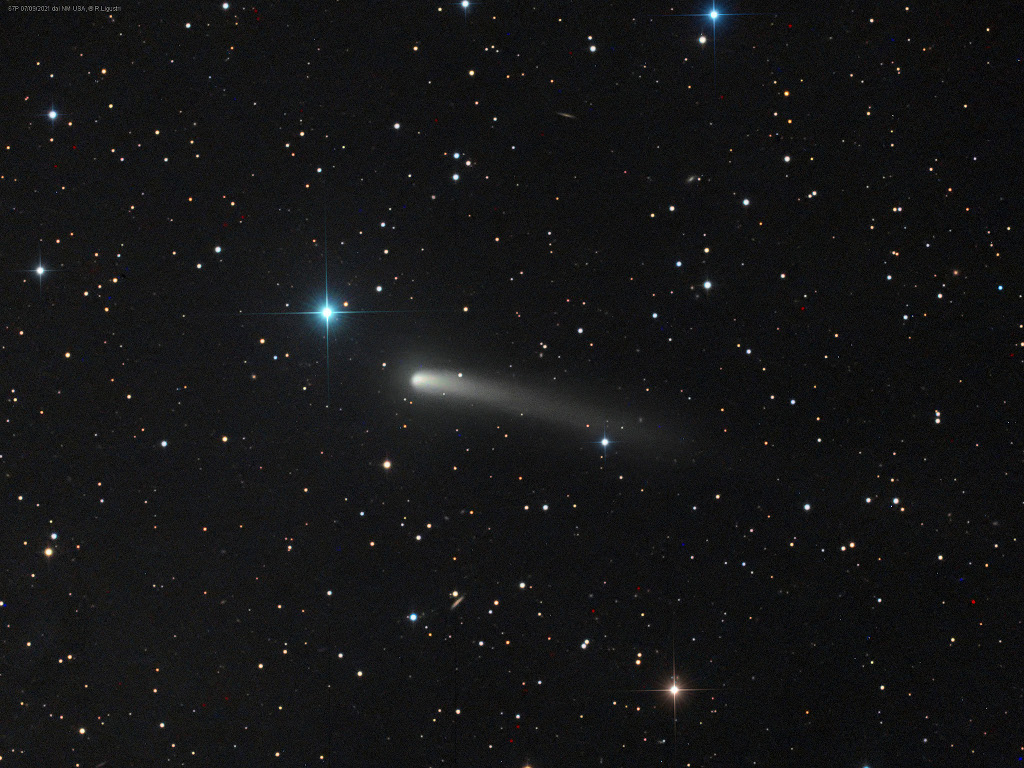2021年9月10日
Rosetta’s Comet in View
Image Credit & Copyright: Rolando Ligustri (CARA Project, CAST)
Explanation: Faint comet Churyumov-Gerasimenko (67P) sweeps past background stars in the constellation Taurus and even fainter distant galaxies in this telescopic frame from September 7. About 5 years ago, this comet’s 4 kilometer spanning, double-lobed nucleus became the final resting place of robots from planet Earth, following the completion of the historic Rosetta mission to the comet. After wandering out beyond the orbit of Jupiter, Churyumov-Gerasimenko is now returning along its 6.4 year periodic orbit toward its next perihelion or closest approach to the Sun, on November 2. On November 12, the comet’s perigee, its closest approach to Earth, will bring it within about 0.42 astronomical units. Telescopes should still be required to view it even at its brightest, predicted to be in late November and December. On September 7 Rosetta’s comet was about 0.65 astronomical units away or about 5.4 light-minutes from our fair planet.
Tomorrow’s picture: cloudy night
罗塞塔彗星进入视野
影像提供与版权: Rolando Ligustri (CARA Project, CAST)
说明: 在这幅摄于9月7日的望远镜影像里,昏暗的丘泽彗星(67P)正掠过金牛座方向的背景恒星前方,而更昏暗的遥远星系也依稀可辨。大约5年前,当探索这颗彗星的历史性罗塞塔任务结束时,它宽4公里的双瓣核心是来自地球无人探测器的长眠之处。而丘泽彗星在沿着周期6.4年的轨道,退到木星轨道后方之后,最近重返,将在11月2日运行到最靠近太阳的近日点。在11月12日,这颗彗星将以约0.42天文单位的间距掠过地球附近。纵然如此,这颗彗星在11月底到12月预期最明亮的期间,还是得借助望远镜才得见。在9月7日拍照之时,罗塞塔彗星离地球约0.65天文单位(5.4光分)远。
明日的图片: cloudy night







